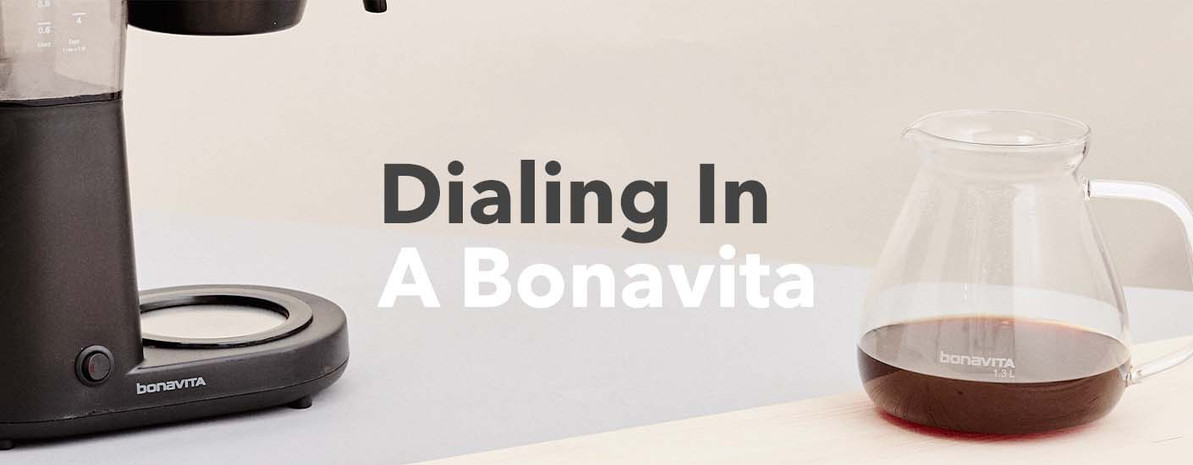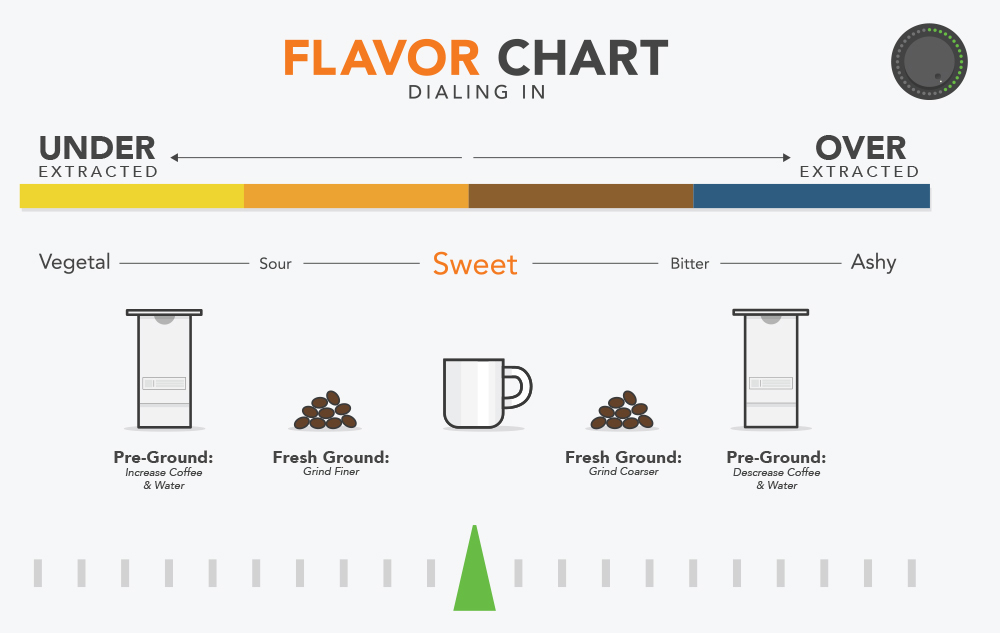Dialing in with the Bonavita Coffee Maker
Bonavita has taken the automatic brewing market by storm—and for good reason. Its single button design makes for a simple user experience while still adhering to important specialty industry brewing standards. Although the Bonavita does most of the "hard work", there are some tricks to honing in that perfect cup, making sure the variables left in your control harmonize with those pre-determined by the machine. If you're frustrated with bitter or sour brews and want to learn how to dial in that morning cup like a pro, stick around!
Strength — How Much
Before we jump into brewing it's important to decide how much coffee is needed, as this will determine flavor concentration. The most common way to measure coffee is by volume --Teaspoons, Tablespoons, Cups, Fluid Ounces, etc. will work ok, but because coffee's density varies by roast or even origin, measuring by volume can be fairly inconsistent. We recommend using a scale for better precision and consistency.
A typical coffee/water ratio by volume is: 2 Tbsp for every 6 fl oz (¾ cup)
A typical coffee/water ratio by weight is : 1 part coffee/15 parts water. 1/14 and 1/16 are also common, and may taste better with certain coffees.
Extraction — Out of the Bean, into the Cup
First, let's touch on some science; There are three central variables that control coffee extraction during brewing:
- Time — The duration of the brew.
- Temperature — How hot the brewing water is.
- Agitation — Physical force applied to the grounds.
While manual brewing devices, like pourover drippers, offer the user control over these three variables, automatic machines make brewing more approachable by maintaining control over all three. The Bonavita heats water to a toasty 200-203F, ensuring optimal solubility, then evenly agitates the grounds with a gentle shower throughout the cycle. Because the flow rate of water through the Bonavita's shower head remains the same, total dispensing time is determined by the amount of water in the reservoir.
With all these things accounted for, what's left? The most important consideration to make before allowing your Bonavita brewer to take over is grind size. Grind size, relative to the total dispensing time, is the user's opportunity to control the flavor of coffee and create harmony with those pre-determined variables. I often relate the concept of dispense time/grind size to baking, in the sense that smaller items, like cupcakes, require shorter baking times whereas larger items, like a cake, tend to require a longer baking time. Generally speaking a short dispensing time requires a fine grind and a long dispensing time requires a coarse grind. Once it's decided how much coffee needs to be brewed, we can use this rule to begin determining the grind size at which our coffee will be extracted or "cooked" best.
Grind size was, unfortunately, never standardized and can be a difficult thing to communicate, given that every grinder is different. But to get you started in the right direction the following visual examples will help you find the general range before fine-tuning.
What if I'm using pre-ground beans?
If you're limited to a single grind size, don't fret. Remember that dispensing time is determined by the amount of water in the reservoir, and by manipulating the dose of coffee and water relatively we can extend or shorten brew times to accommodate the given grind size. Pre-ground coffee often requires a compromise in the total amount of coffee brewed, as you'll probably need to change your water input to find the right extraction of those grounds.
For example: Let's assume you've just finished a brew using 8 Tbsp of pre-ground coffee and 24 fl oz of water. Your coffee tastes bitter and was extracted too long—gross! In order to lessen extraction you change your dose of coffee to 7 Tbsp and change your water input to 21 fl oz. While still maintaining your strength ratio (1 part coffee to 15 parts water), you've effectively lessened the amount of contact time your grounds have with the water and therefore decreased extraction—perfect!
Fine-Tuning
Now that your grind is within the right range, the best way to dial in your coffee is to taste! Utilize the following chart, which lists the most common flavor characteristics associated with under-extracted, over-extracted, and well extracted coffee. Remember to make small adjustments and to let your coffee cool a bit before making decisions.








